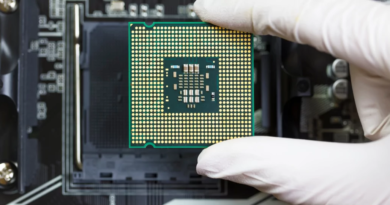2022 State of the U.S. Semiconductor Industry – Semiconductor Industry Association
SEMICONDUCTORS—THE TINY CHIPS POWERING MODERN ELECTRONICS—HAVE ENABLED BREATHTAKING INNOVATION IN VIRTUALLY ALL AREAS OF SOCIETY, FUNDAMENTALLY SHIFTING THE BOUNDARY BETWEEN THE POSSIBLE AND THE IMPOSSIBLE. TODAY’S SEMICONDUCTORS ARE SO ADVANCED THEY CAN CONTAIN MORE THAN 100 BILLION TRANSISTORS ON A SINGLE PIECE OF SILICON—SO MANY THAT IT WOULD TAKE A PERSON MORE THAN 1,000 YEARS TO COUNT EACH ONE ALOUD. In 2022, with the importance of semiconductors to the global economy continuing to grow, the semiconductor industry has worked tirelessly to speed the pace of innovation and ramp up production. In fact, the global industry is on pace to ship more semiconductors this year than during any year in history, an achievement that has helped ease the ongoing global chip shortage. Meanwhile, U.S. semiconductor companies continue to invest roughly one-fifth of annual revenue in R&D — amounting to a record $50.2 billion in 2021, the last full year of available data — to turbocharge chip advancements.
In 2022, with the importance of semiconductors to the global economy continuing to grow, the semiconductor industry has worked tirelessly to speed the pace of innovation and ramp up production. In fact, the global industry is on pace to ship more semiconductors this year than during any year in history, an achievement that has helped ease the ongoing global chip shortage. Meanwhile, U.S. semiconductor companies continue to invest roughly one-fifth of annual revenue in R&D — amounting to a record $50.2 billion in 2021, the last full year of available data — to turbocharge chip advancements.
This year also saw the enactment of landmark, bipartisan legislation, the CHIPS and Science Act, that will substantially strengthen domestic semiconductor production and innovation in the years ahead. The CHIPS Act includes $52 billion in chip manufacturing incentives and research investments, as well as an investment tax credit for semiconductor manufacturing and semiconductor equipment manufacturing. These investments will help reinvigorate U.S. leadership in chip technology and reinforce America’s economy, national security, and supply chains.
Despite an historic year in 2022, the semiconductor industry continues to face significant challenges. Global semiconductor sales growth slowed substantially during the second half of the year, for example, and the market—known for its cyclicality—is not projected to rebound until the second half of 2023. In addition, U.S.-China tensions continue to have repercussions on the global supply chain, leading to the proliferation of government controls on sales of chips to China, the world’s largest semiconductor market. And other significant policy challenges remain, including the need to enact policies to maintain U.S. leadership in semiconductor design, reform America’s high-skilled immigration and STEM education systems, and promote free trade and access to global markets.
Overall, 2022 was a highly successful and consequential year for the industry, as semiconductors are poised to have a greater positive impact on the world than ever. With effective government-industry collaboration in the years ahead, the industry can continue to grow, innovate, and realize an even brighter future built on semiconductors.
Download the Full Report
1101 K Street NW Suite 450, Washington, DC 20005
E-mail
